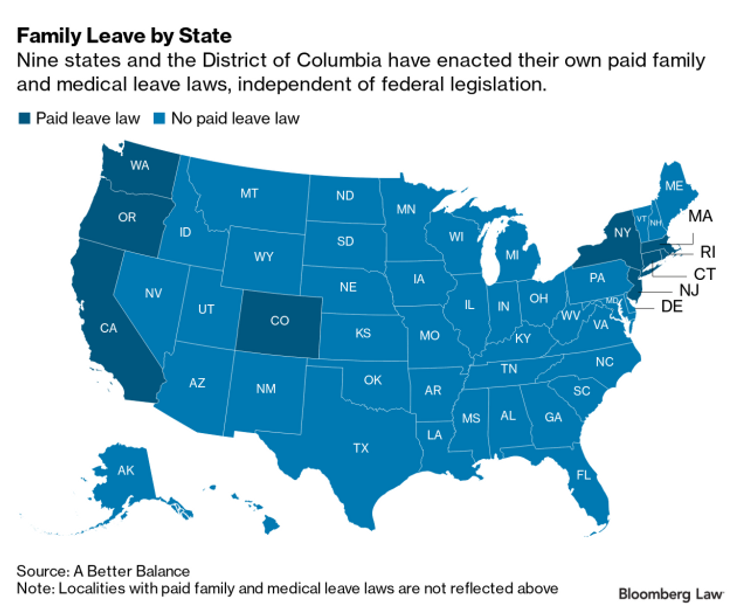The Biden Administration and congressional representatives have proposed a federal paid Family Medical Leave (PFML) Act. Currently, employers are required to follow the Family and Medical Leave Act (FMLA), which provides employees with twelve weeks of job-protected and unpaid family leave for qualified medical and family reasons.

To date two plans have been proposed, one by the Biden Administration and the other by Massachusetts representative Richard Neal. Biden’s plan, as a provision of the American Families Plan Act, would provide for 12 weeks of paid family and medical leave. The plan would allow for a base of 66% income replacement. Lower earners could potentially receive up to 80% income replacement. All income replacement would be capped at $4,000 a month. It is important to note that while this is a sufficient amount for many American families, higher earners may need to rely on supplemental income in order to maintain their standard of living if leave is taken.
The second plan is the Building an Economy for Families Act, proposed by Massachusetts representative Richard Neal. The plan presents a more detailed tier structure for income replacement and currently replicates the plan enacted in Neal’s home state of Massachusetts. The tier structure would provide up to 85% of income replacement for individuals earning less than $1,256 per month and only 5% of income replacement for individuals earning more than $8,334 per month. Neal’s proposal stated that states with existing PFML programs could continue their existing plans as long as they meet the requirements of the federal plan. Currently, ten states offer paid family or medical leave.
Leave would be allowed for the same reasons as those outlined in the Family Medical Leave Act, including recovery from an illness or injury that occurred off the job-site, caring for an ill loved one, bonding with a new child, and seeking safety from domestic violence. Additionally, Neal’s plan increases the span of the term “family member”. Under this plan, family would include siblings, grandparents, grandchildren, spouses of family members, and “chosen family”.
It has not yet been explicitly stated how these plans will be funded. Based off Neal’s proposal, there are likely two possible options for funding. The first option is funding the plan through a public program managed by the U.S. Treasury Department, which would likely allocate a portion of the increased tax revenue from the proposed tax plan to cover paid family and medical leave. A second option would be a provision for employer-provided and private coverage through insurance carriers. These two funding sources could also exist congruently, giving employers the option to utilize a federal or private plan. More details about these plans are likely to come out in the near future. If passed, it would become one of the largest expansions in the U.S. social safety net.
Sources: https://insurancewholesaler.net/federal-paid-family-medical-leave/, https://www.shrm.org/resourcesandtools/hr-topics/benefits/pages/how-bidens-paid-fmla-proposal-would-work.aspx#:~:text=President%20Joe%20Biden%20has%20proposed,Medical%20Leave%20Act%20(FMLA), https://www.gobankingrates.com/money/economy/paid-family-leave-present-and-future-explained-what-you-need-to-know/, & https://www.cnbc.com/2021/04/28/paid-leave-of-up-to-4000-a-month-for-12-weeks-part-of-biden-proposal.html
